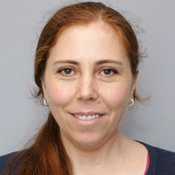Program Information
Advanced Breast Imaging: Stereotactic Breast Biopsy Updates and Contrast Enhanced Spectral Mammography
G Mihai1*, W Geiser2*, (1) Beth Israel Deaconess Medical Center, Boston, MA, (2) UT MD Anderson Cancer Center, Houston, TX
Presentations
7:30 AM : Contrast Enhanced Spectral Mammography Updates - G Mihai, Presenting Author8:00 AM : Acceptance Testing and ACR Accreditation of Stereotactic Breast Biopsy Systems - W Geiser, Presenting Author
WE-A-702-0 (Wednesday, August 2, 2017) 7:30 AM - 8:30 AM Room: 702
Several x-ray imaging modalities are being developed to improve early detection and staging of breast carcinoma. This session will review advances in stereotactic breast biopsy systems and contrast enhanced spectral mammography.
In October 2007 the American College of Radiology (ACR) started a new program called the Breast Imaging Center of Excellence (BICOE). The BICOE designation is awarded to breast imaging centers that have earned accreditation in the ACR’s voluntary breast-imaging accreditation programs including breast ultrasound with ultrasound guided biopsy, stereotactic breast biopsy, breast MRI as well as the mandatory mammography accreditation program.
There are several different stereotactic breast biopsy systems on the market. There are two standalone prone tables and several add on biopsy attachments for conventional digital mammography systems. One vendor is also marketing a tomosynthesis guided biopsy capability on both their prone biopsy table and their add-on system for their standard mammography system.
Contrast - Enhanced Spectral Mammography (CESM) is a relatively new technique in breast imaging that combines full field digital mammography (FFDM) with the use of iodinated contrast agent. It produces typical orientation 2D mammographic images capable of distinguishing breast malignancies based on their increased vascularity and contrast permeability. During the last few years, CESM has become a valuable clinical tool shown to be superior in detection of suspicious lesions compared to FFDM and ultrasound, especially in dense breast tissue, with accuracy in cancer detection and staging comparable with that of breast magnetic resonance imaging (MRI).
This session will provide the medical physicist with the knowledge he needs to help their women’s imaging facilities obtain and maintain accreditation in stereotactic breast biopsy. Required QC testing, other accreditation program requirements, as well as performance testing of tomosynthesis guided biopsy systems will be covered. Physical principles, current clinical state of dual energy CESM, dose considerations, some aspects of QC, and advantages and disadvantages of CESM will also be discussed.
Learning Objectives:
1. Understand the annual test requirements for stereotactic breast biopsy systems accredited by the ACR for both upright add on systems and standalone prone biopsy systems.
2. Understand the operation of tomosynthesis guided breast biopsy systems.
3. Understand the basic principles of CESM.
4. Understand the clinical advantages and limitations of CESM.
Handouts
- 127-35688-418554-127780.pdf (G Mihai)
- 127-35689-418554-126323-1568846208.pdf (W Geiser)
Contact Email:


